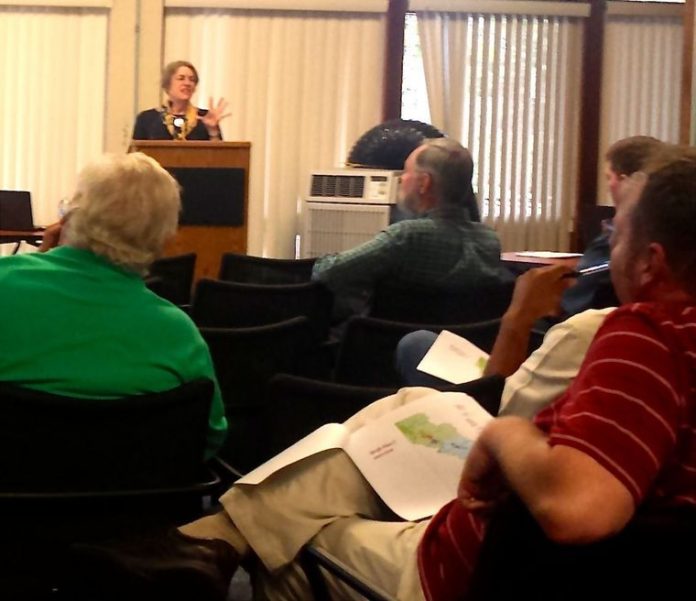
Latino voting rights advocates have challenged a trio of draft plans for new voting districts drawn by Gavilan College as it carefully makes a historic switch to by-district elections for the board of trustees.
The plans have been the subject of discussion at community meetings hosted by the district in Gilroy, Morgan Hill and Hollister, but most have been poorly attended and in one case no one showed up at a Morgan Hill meeting.
Now a fourth plan has emerged, presented by Latino voting rights advocates and officially accepted by school trustees as a legitimate option for discussion.
The San Benito County and Gilroy chapters of the League of United Latin American Citizens with the help of the nationally influential Mexican American Legal Defense and Educational Fund introduced the plan.
“I found the LULAC presentation very interesting,” said Gavilan Board Chairman Walt Glines in a written response to the Dispatch.
“It’s clear the membership put a lot of hard work into the process. In some respects it was different than what our demographer initially presented,” he said.
The demographer, Jeanne G. Gobalet, of Lapkoff & Gobalet Demographic Research, Inc. of Saratoga, is the school’s primary consultant on the drawing of new trustee districts that will ensure equal and fair representation for all groups.
“We scheduled the meetings to get feedback from the community. The LULAC response is very much a part of that feedback. That was how the process was designed to work. Trustees and the demographer listened and heard. We continue to listen and hear,” Glines wrote.
The college has moved to adopt the new system as more and more lawsuits or threats of suits have been filed by MALDEF and others against schools, colleges and cities to force compliance with voting laws designed to protect the rights of minorities and other underrepresented groups.
College officials said they preferred to be proactive in the matter rather than face expensive lawsuits that would drain financial resources.
Since the early 1900s, the college has held at-large elections, meaning no matter which geographic area a candidate hailed from in the college district’s 27,000 square miles from San Benito to south Santa Clara County, everyone could vote for every candidate.
Under the new system, slated to be in place next year, candidates from seven districts will run only in their home district and only residents of that district can cast votes for that seat.
In analyzing and comparing the four plans, Gobalet identified 25 areas of “significant differences” among the plans, including five in a criterion required by law: population equality and the number of Hispanic-majority trustee areas.
Cesar Flores, president of the San Benito LULAC chapter said one of the group’s main critiques of the college’s three proposed maps is the splitting up of communities with historic ties.
“We didn’t care for that and with the help of MALDEF we drew our own map, which we felt was more inclusive of our community.”








